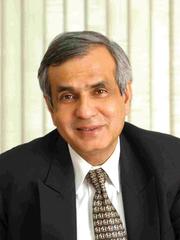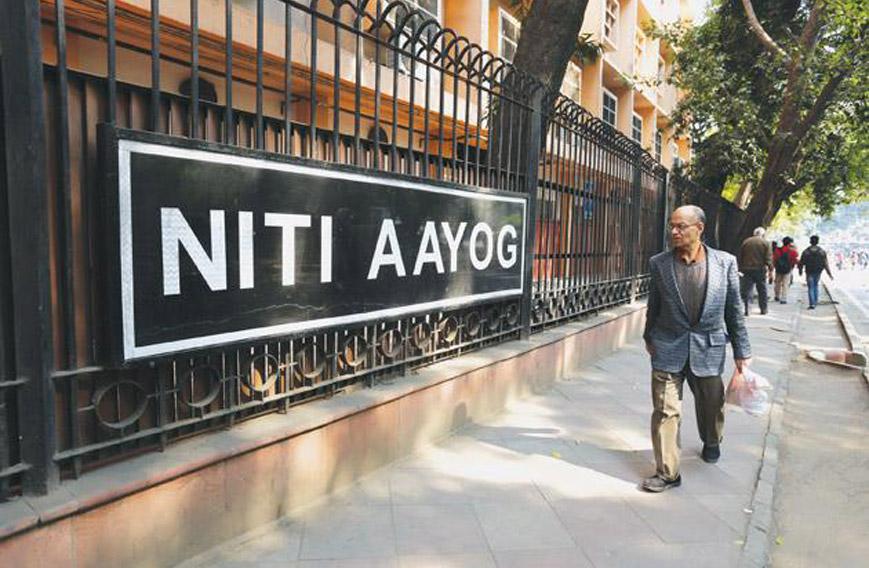
RAJIV KUMAR
The National Institute for Transformation of India (NITI) Aayog was formally launched on 8 February with the first meeting of its Governing Council (GC). The GC effectively replaces the National Development Council, and is made up of all the chief ministers, relevant ministers from the Central Cabinet, vice-chairman and members of the NITI Aayog and presided over by the Prime Minister. In its composition, therefore, the NITI Aayog reflects its predecessor, the Planning Commission. The difference from the past could well be in the exhortation by its Chairman, the Prime Minister, for it to work as Team India and pursue the model of cooperative, competitive federalism.
The GC has tasked the NITI Aayog with carrying out a mid-term review of the 12th Plan. Does this imply that the NDA government has in effect adopted the 12th Plan prepared under the supervision of Dr Manmohan Singh and Montek Singh Ahluwalia? After the adoption of the Aadhar scheme, continuing with senior officers and flagship schemes of the UPA government, this would be yet another example of the Prime Minister’s preference for continuity and changing slowly. Such an approach has both its downside and upside risks. On the downside, the approach could make current policy hostage to past practices and inertia. Its obvious upside is to minimise transition costs and demonstrate policy continuity. I would have preferred a clean break with the past.
Three sub-groups and two task forces have been constituted under the NITI Aayog’s aegis. The first sub-group of chief ministers will study the 66 Centrally Sponsored Schemes and recommend their rationalisation. The second will recommend how the NITI Aayog can promote skill development and the creation of skilled manpower within states. The third will decide on institutional mechanisms to be evolved and identify technological inputs for ensuring that the commitment to Swachh Bharat becomes a part of our life in perpetuity. The first task force will focus on poverty alleviation and the other will focus on the future development of agriculture in states and how the Centre can assist particular states in this regard. The mandate, as given by the GC, implies that henceforth the function of devolving ‘plan funds’ to the states will be taken away from the NITI Aayog and handed over presumably to the Finance Ministry, acting as per the awards by successive Finance Commissions.
That the NITI Aayog will serve as the think-tank of the government was evident from the fact that, prior to its formal launch, the PM had used it as a forum for an interaction on 6 February with selected economists and experts (including yours truly) for eliciting suggestions on the forthcoming budget and addressing other important medium-term challenges. The interaction was the first of its kind. The NITI Aayog’s earlier avatar, the Planning Commission, was never used, at least in my memory, by the PM to interact with external experts. Hopefully, this practice will be institutionalised for the NITI Aayog to serve as a bridge between the government and think-tanks and researchers. This would serve the important function of making the government less knowledge-proof going forward.
We could also expect the emergence of a strong working relationship between the PMO and the NITI Aayog. Given the lack of statutory authority and the absence of clearly articulated rules of business for the new body, this will be critical. As one foreign observer quipped, Professor Arvind Panagariya could hardly be expected to give up his University of Columbia professorship for anything short of regular and intensive interaction with the PM and his senior officials. Even with a strong bond between the PMO and the NITI Aayog, it will still be necessary to write down the rules of business for the Aayog, to make it an effective instrument for inter-ministerial and inter-government coordination. These business rules provide the necessary framework for a government agency such as the NITI Aayog to play an effective role in the complex governance space both at the Centre and the States.
From developments so far, would it be fair to surmise that the NITI Aayog will certainly have a significantly curtailed mandate compared to its earlier incarnation? Several questions arise. In the absence of any financial leverage over them, will the NITI Aayog receive the necessary cooperation from state governments, especially those led by opposition parties? Will other Central ministries, departments and agencies, find it worth their while to coordinate their policies and programmes with the NITI Aayog? For example, will the Ministry of Skills Development and the National Skills Development Authority find it useful to do so? Was there indeed any need to charge the the NITI Aayog with skills formation in the states when two extant organisations were already mandated to do so? The same is true for its role in the PM’s favourite Swachh Bharat Abhiyan, which is the joint responsibility of the Ministries of Health and Rural Development.
My fear is that, given the lack of statutory authority and the absence of well-defined rules of business, it could continue to be perceived as a fifth wheel by both state government and central government agencies. Its role in government policy formulation would then be restricted to the personal access that the vice-chairman and two full- time members enjoy with the PM and his Cabinet colleagues. This would surely be more difficult with state governments, which are not beholden to the Centre and in any case further removed. I am left wondering at the rational and strategic approach that has underpinned the design and mandate of the NITI Aayog.
Would it not have been useful to give the NITI Aayog a clear mandate to interact with private sector specialists and civil society think-tanks and act as a conduit for bringing their inputs into government operations? Would it not have been more useful if the NITI Aayog could lead the effort for India to improve its ranking in global competitiveness indices? That would have given it a different orientation and made it part of much-needed efforts to integrate the Indian economy more competitively and effectively in global supply chains and production networks.
As it stands today, the NITI Aayog seems like a paler version of its predecessor with similar domestic orientation and lack of statutory authority to ensure compliance from any quarter. Let’s hope this will change as lessons are learnt and the NITI Aayog finds its moorings with strong support from its Chairman, the Prime Minister.
Rajiv Kumar is Senior Fellow, Centre for Policy Research, and Founder-Director, Pehle India Foundation.
Comments
Currently there are no Comments. Be first to write a comment!




